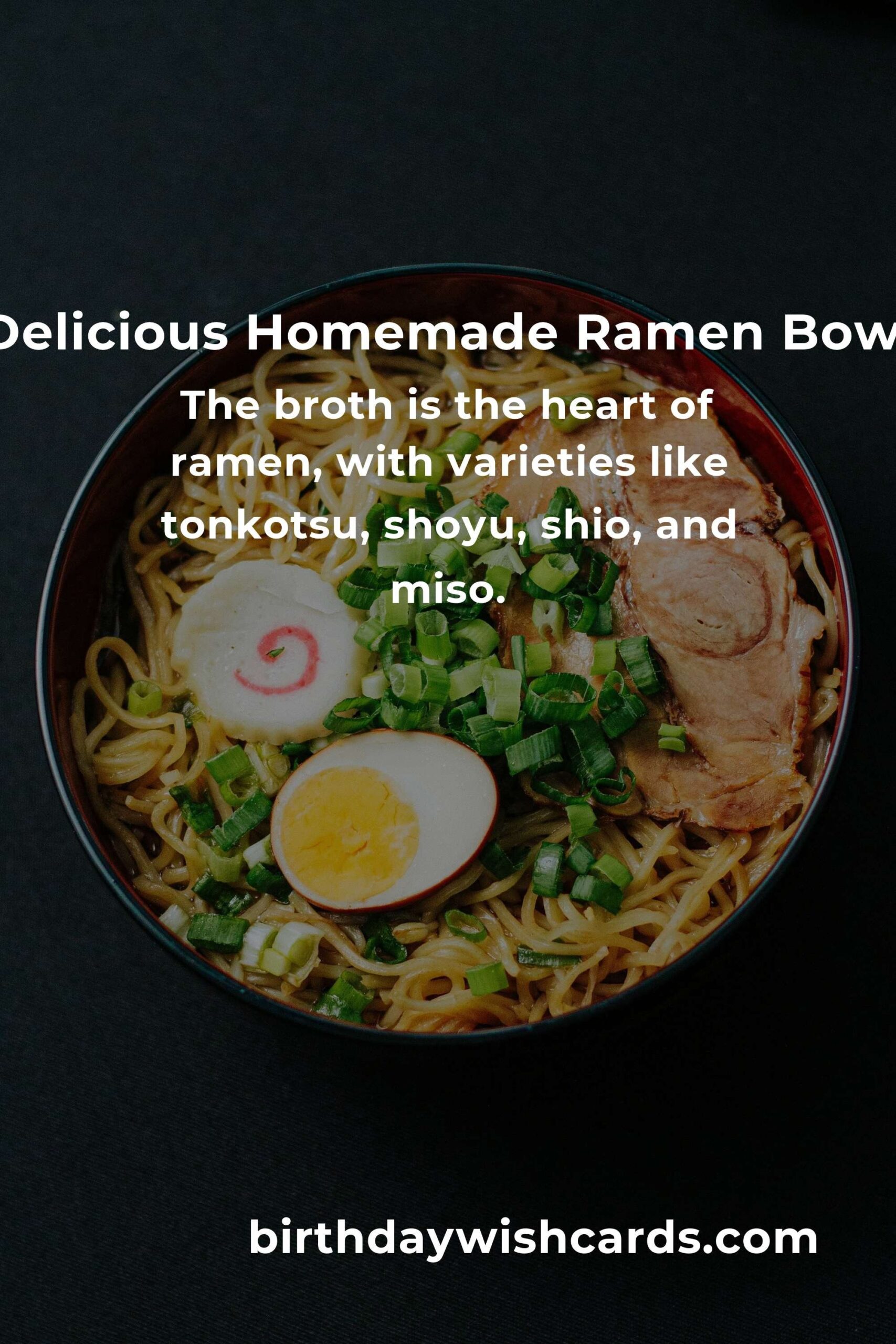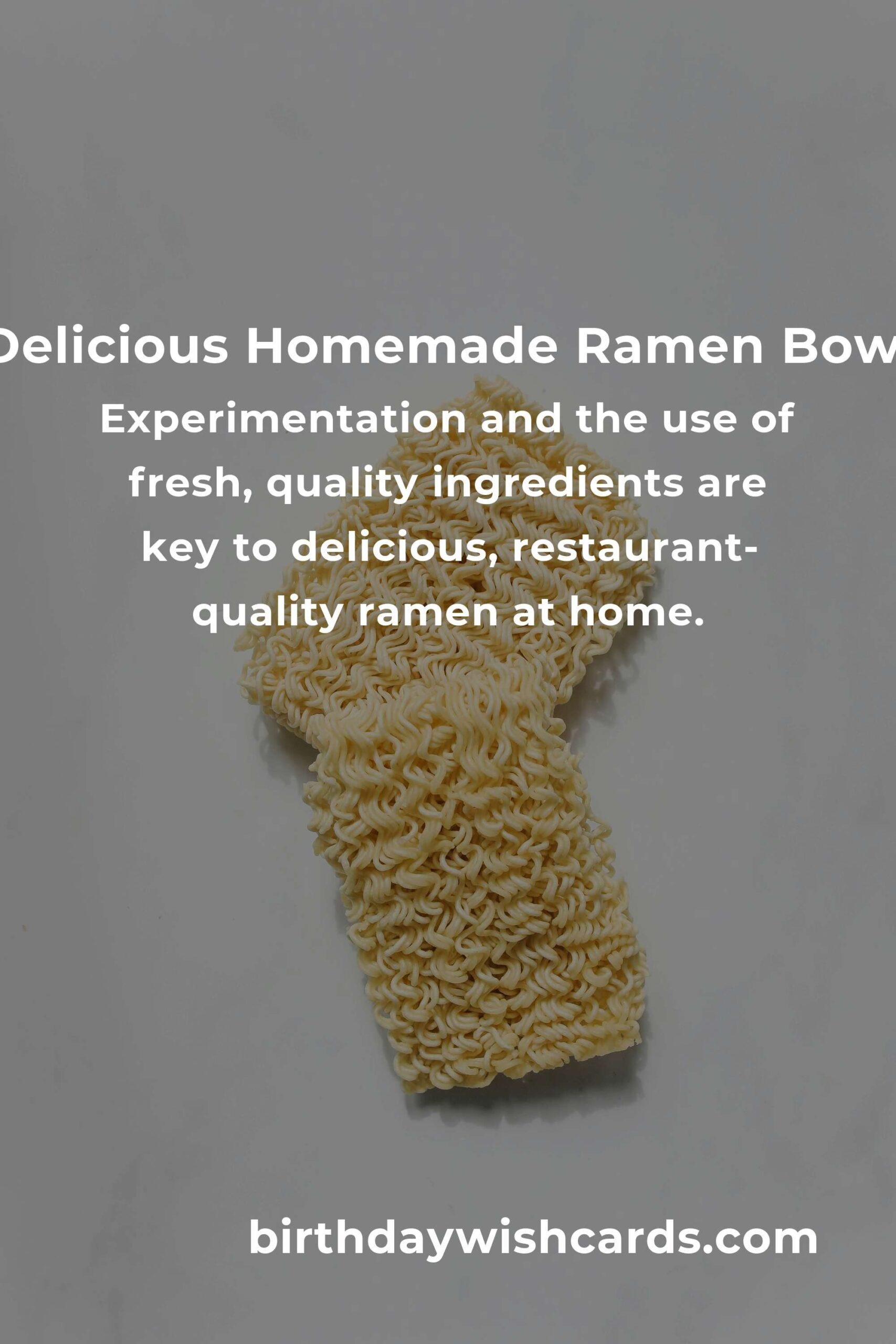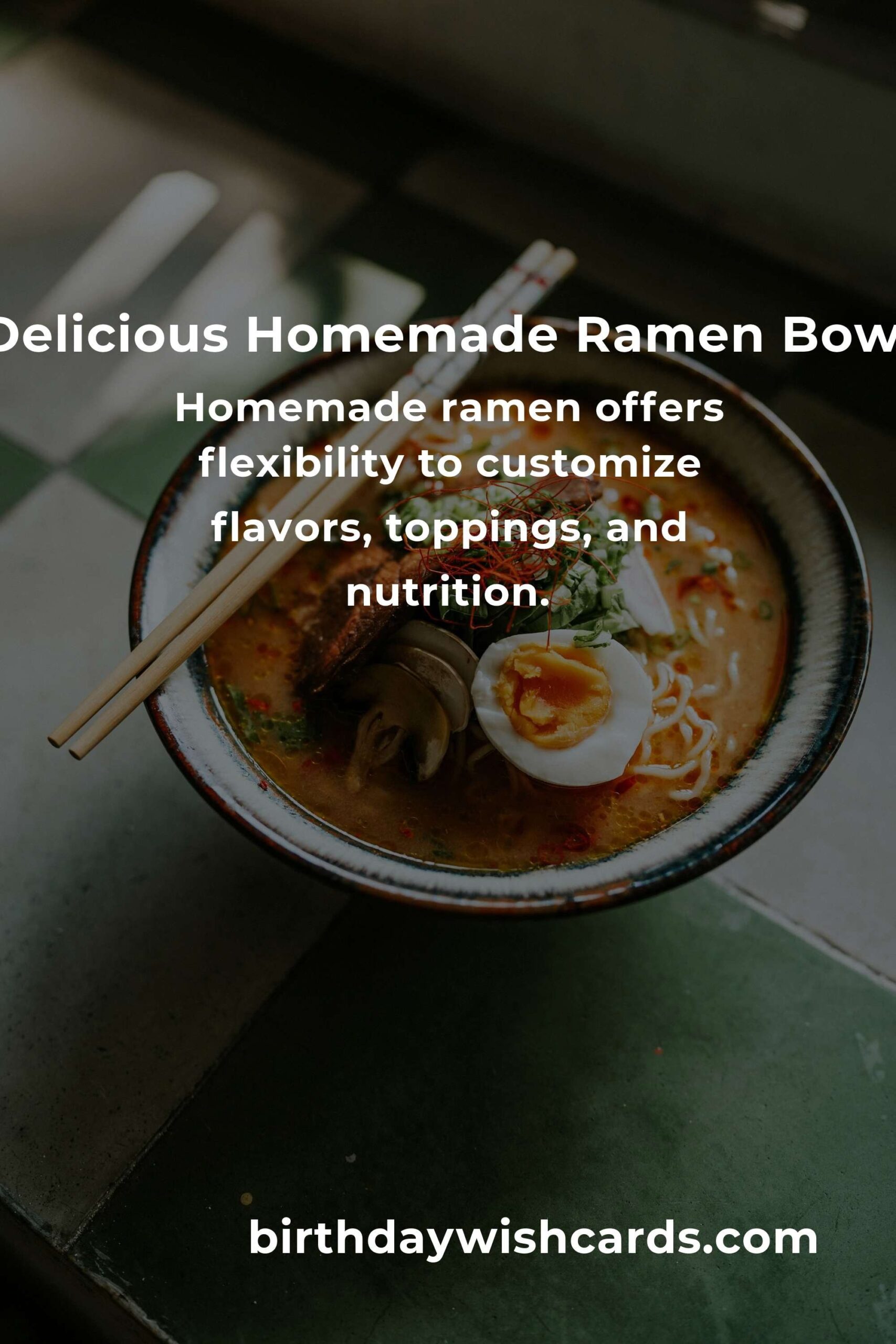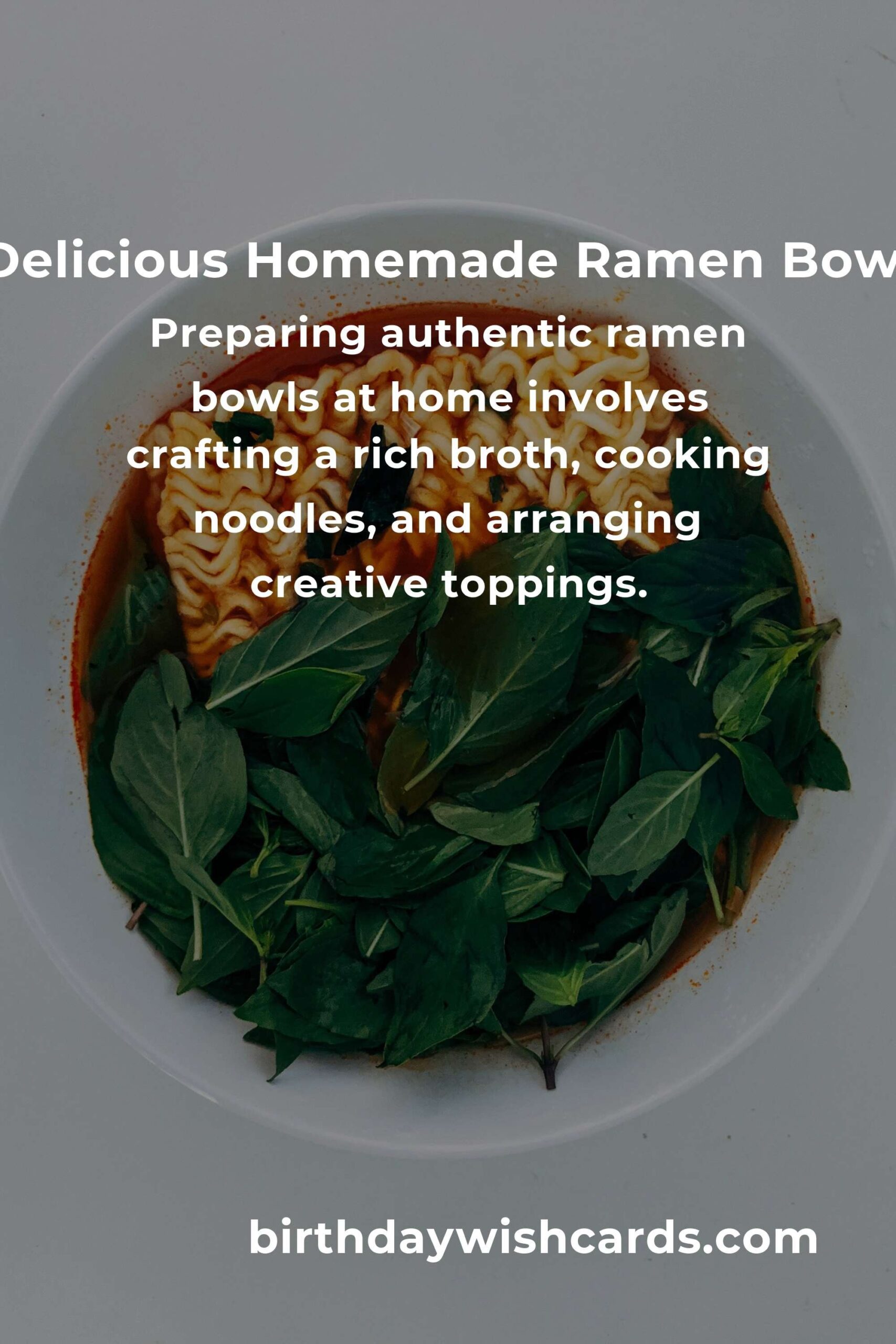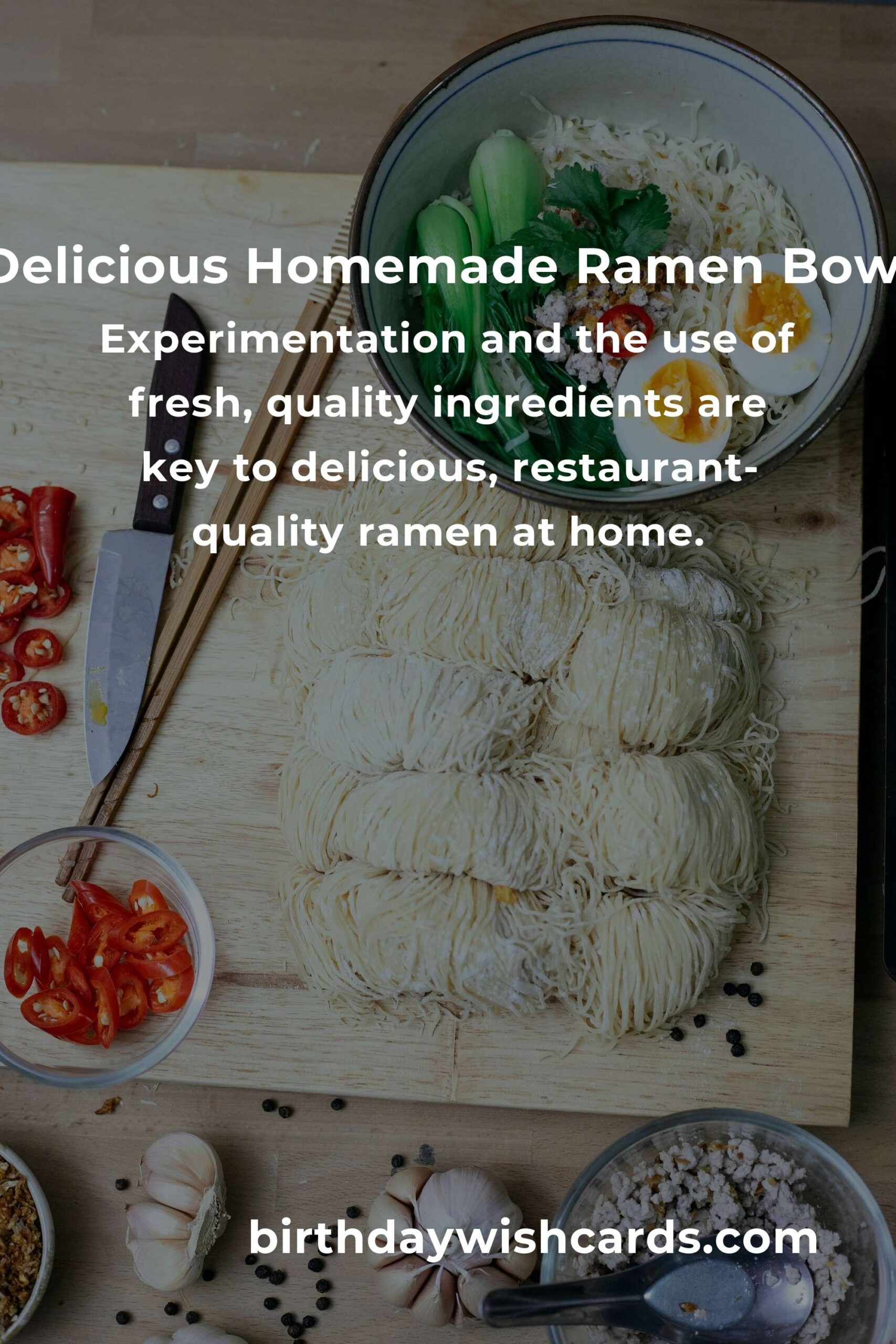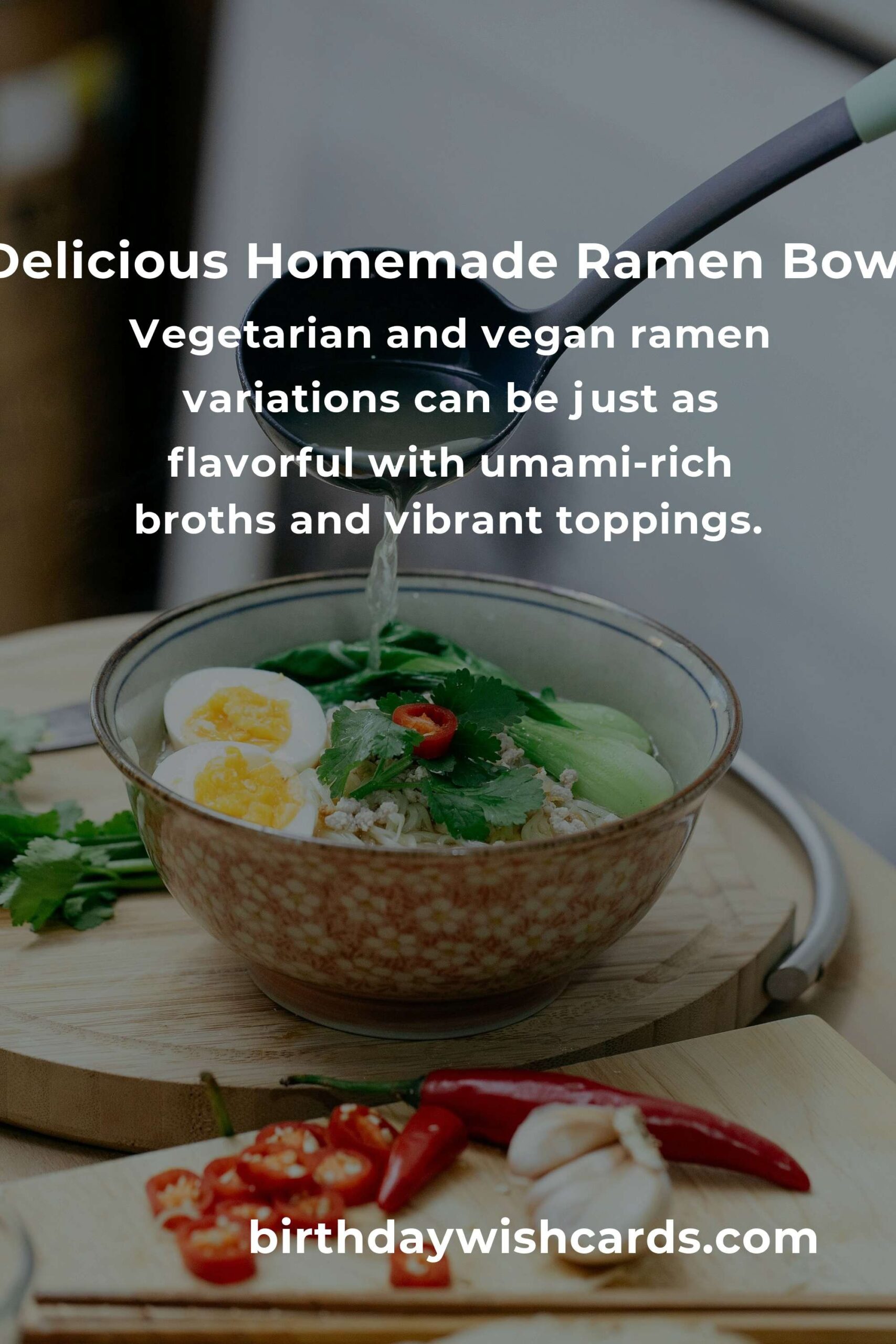
If you love slurping comforting bowls of savory noodles, nothing beats homemade ramen. With its complex broth, springy noodles, and a vibrant array of toppings, ramen is more than just a meal—it’s a culinary adventure. But is it possible to create an authentic ramen bowl in your own kitchen? The answer is a resounding yes! In this ultimate guide, we’ll walk you through everything from essential ingredients to expert techniques so you can make restaurant-quality ramen in the comfort of your home.
Why Make Ramen at Home?
Homemade ramen offers complete flexibility. You control the flavors, toppings, and spice levels. Whether you favor a rich pork tonkotsu or a lighter shoyu (soy sauce) broth, cooking ramen yourself means you can tailor each bowl to your tastes and dietary needs. Plus, it’s a fun way to experiment with Japanese cuisine and impress friends and family.
Types of Ramen Broth
The soul of ramen is in the broth. There are several classic styles:
- Tonkotsu: Creamy pork bone broth, rich and hearty.
- Shoyu: Clear, chicken or pork broth seasoned with soy sauce—savory and balanced.
- Shio: Light salt-based chicken or seafood broth, delicate and clear.
- Miso: Nutty, slightly sweet broth flavored with fermented soybean paste.
Each style offers a different taste experience, so choose one depending on your craving and available ingredients.
Essential Ramen Ingredients
Before you start, gather the following basics:
- Noodles: Authentic ramen uses wheat-based alkaline noodles. Find them fresh or dried at Asian grocery stores.
- Broth Base: Bones (pork, chicken), kombu (kelp), dried shiitake mushrooms, vegetables, or a combination.
- Seasoning: Soy sauce, miso, salt, mirin, sake.
- Aromatics: Garlic, ginger, green onions, onions.
Don’t forget toppings like chashu pork, marinated eggs, nori (seaweed), bamboo shoots, and corn for a truly authentic touch.
Step-by-Step: Building Your Ramen Bowl
Step 1: Prepare the Broth
The most time-consuming (and rewarding) step. For a basic chicken or pork broth:
- Blanch Bones: Bring bones to a boil for 5-10 minutes. Drain and rinse to remove impurities.
- Simmer: Add clean bones to a large pot with water. Add aromatics and simmer for 4-10 hours. Skim off foam regularly.
- Season: Once reduced and flavorful, add your choice of soy sauce, miso, or salt.
Short on time? You can use store-bought chicken or pork broth and upgrade it with miso, scallion, ginger, and extra seasoning.
Step 2: Cook the Ramen Noodles
Cook noodles just before serving to ensure the perfect texture. Boil a large pot of water (don’t salt it), add noodles, and cook according to the package instructions—usually 2-4 minutes. Drain well.
Step 3: Prepare the Toppings
- Chashu Pork: Slow-braise pork belly in a soy sauce/mirin mixture until tender, then slice thin.
- Marinated Eggs: Soft-boil eggs, peel, and marinate in soy sauce and mirin for several hours.
- Bamboo Shoots: Simmer in soy mixture for extra flavor.
- Nori: Tear into strips or squares.
- Other: Sweet corn, green onions, mushrooms, spicy chili oil, sesame seeds, narutomaki (fish cake).
Get creative with what you like or have on hand!
Step 4: Assemble the Ramen Bowl
- Warm the Bowl: Pour hot water into ramen bowls, let sit, then discard. This keeps your ramen hot longer.
- Add Broth Base: Pour hot seasoned broth into each bowl.
- Layer Noodles: Add cooked noodles and swirl gently to coat.
- Arrange Toppings: Artfully place meat, eggs, nori, veggies, and finish with garnish (green onions, sesame seeds, chili oil).
Serve immediately and enjoy while everything’s piping hot!
Pro Tips for Authentic Flavor
- Long Simmer: The longer you simmer broth, the richer and silkier it becomes.
- Layer Seasonings: Taste as you go—add a splash of soy or a dash of salt to perfection.
- Fresh Noodles: Fresh ramen noodles have superior spring and chew compared to dried.
- Eggs Just Right: A 6-7 minute boil yields a luscious jammy yolk.
Vegetarian and Vegan Ramen Options
Plant-based ramen bowls are just as satisfying. Here’s how to craft a flavorful vegan bowl:
- Broth: Simmer kombu, dried shiitake, onions, and carrots for umami depth.
- Toppings: Roasted tofu, marinated mushrooms, wilted greens, corn, bamboo shoots.
- Miso: Add white or red miso to the broth for richness and complexity.
Fun Variations to Try
- Spicy Ramen: Add chili oil, sautéed chili paste, or Korean gochujang for fiery warmth.
- Seafood Ramen: Use shrimp, scallops, or fish cakes along with a dashi-based broth.
- Curry Ramen: Stir in Japanese curry roux for an irresistible flavor twist.
Frequently Asked Questions
Is ramen healthy?
Homemade ramen can be nutritious with lean proteins, vegetables, and mindful seasoning. Control salt and fat levels to your preference.
Can I freeze ramen broth?
Yes! Make extra broth and freeze in portions. Simply reheat and add fresh noodles when ready to serve.
Where do I buy ramen noodles and ingredients?
Asian grocery stores are your best bet, but many supermarkets offer fresh or dried ramen noodles and basic Japanese ingredients in the international aisle.
Conclusion: Mastering Ramen at Home
With practice and patience, you’ll master the art of ramen right in your kitchen. Each step lets you customize flavors and textures, ultimately creating a bowl that rivals your favorite noodle bar. Don’t be afraid to experiment, and remember—the best ramen is the one you love to eat!
Quick Ramen Recipe (For Beginners)
- Bring 6 cups of chicken or vegetable broth to a simmer. Add 1 tablespoon soy sauce, 1 tablespoon miso paste, 1 teaspoon ginger, and 2 minced garlic cloves.
- Cook fresh or dried ramen noodles according to package instructions.
- Add cooked noodles to a bowl, pour in hot broth, and top with soft-boiled eggs, sliced scallions, corn, and nori.
- Drizzle with chili oil, sprinkle with sesame seeds, and enjoy!
Ramen Bowl Inspiration Gallery
Visualize your ideal bowl with these creative topping arrangements and color combinations. Don’t hesitate to add your own flair—ramen is as much about expression as tradition.
Homemade ramen offers flexibility to customize flavors, toppings, and nutrition.
The broth is the heart of ramen, with varieties like tonkotsu, shoyu, shio, and miso.
Preparing authentic ramen bowls at home involves crafting a rich broth, cooking noodles, and arranging creative toppings.
Vegetarian and vegan ramen variations can be just as flavorful with umami-rich broths and vibrant toppings.
Experimentation and the use of fresh, quality ingredients are key to delicious, restaurant-quality ramen at home.
#ramen #homemaderamen #noodles #japanesefood #cooking #ramenathome



